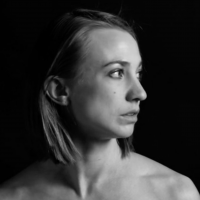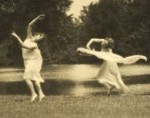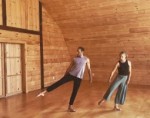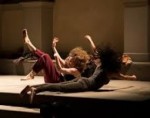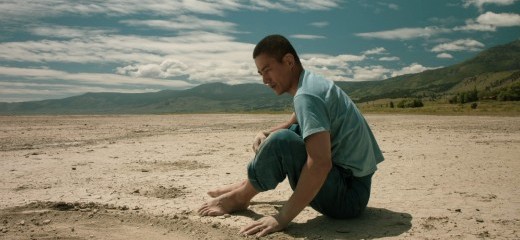
Solo in the Ascendency: Pandemic Personal Practice
by Eleanor Goudie-Averill
Since March 16th, I’ve been keeping a page in my journal, now two pages spilling onto three, of my personal dance practice. One line reads “Qi, short walk to the knoll,” another “barre with push-ups and bike to the boat launch.” Who knows how many pages this will go on as “Stay Home, Stay Safe” (as we call it here in Vermont) continues? I have always been one to dance alone, to do my own yoga practice or remember sequences that various teachers have taught me. This remembering and repeating often teaches me more than I learn in a class. Trying things on and tailoring them to fit my body, as I make anatomical and artistic discoveries. I’m not one to document these things on social media, or share them with anyone else, but personal practice keeps me sane. It is the practice of being present with myself, with my class plans, with old injuries, and ongoing curiosities.
In March, three friends (Anna Maynard, Sofia Engleman, and Em Papineau) in Northampton, MA, started freeskewl, a platform to bring ''dance artists together online via classes on Zoom,” and asked if I wanted to teach. I replied that I couldn’t possibly teach online. I had just heard of Zoom, the app/extension that is now part of our common vocabulary (“Zooming” appears as a verb in the NY Times, and sometimes I’ll have a “four-Zoom day”). That stance lasted about two weeks, as I moved the classes that I teach at Connecticut College online, pre-recording ballet classes for the first couple of weeks, scanning new readings, and readying new assignments and grading rubrics. Then, Zooming became unavoidable, and the desire to see my students and colleagues (a two-inch tall person is better than no one at all), and the desire for the nervous feeling and adrenaline rush that I still get from live teaching (yes, even after fifteen years), won out.
I began offering a weekly contemporary ballet class via Zoom. I get anywhere from 16-28 dancers a week, showing up in their homes to take barre using a chair or countertop. This has become very grounding for me, and each week I look forward to creating a new sequence and sharing it with people from various parts of my life: current students, former students from Temple, esteemed colleagues, friends from NYC, etc. Sometimes, I ask everyone to change to gallery view so that we can attempt to dance together. Other times, I get to stop and watch, marveling at these tiny gorgeous forms in so many living rooms.
I also take Jennifer Nugent’s class each Sunday via freeskewl, and it is comforting to see a familiar group of faces there each week as well. Even dancers that I didn’t know before feel like new friends to me, tuning in from Atlanta or New Orleans.
During this time, my longtime collaborator Tori Lawrence started Movement Crossings, a website initially made for her students at Middlebury College, where she is the 2019-2020 artist-in-residence. The website contains scores/prompts for improvisation, most of which contain an audio component that can be downloaded so that the teacher guides you through a practice away from a screen. Penny Campbell, who brought the tradition of Performance Improvisation to Middlebury and taught there for 29 years, currently has two scores on the site. Her first score “Arriving, Begin Standing” opens with her saying, “This is a period of time in which the solo is in the ascendency.” I asked Penny why this might be a positive trend. She said that she had noticed in recent improvisation classes that “dancers seemed fearful of taking solos; everybody sort of wanted to be part of a herd. Dancers didn’t actually seem to know how to develop solos. For me, the most essential building block of an ensemble is the individual generating interesting material and growing as an artist. Careful listening and lightning-fast response to others’ compositional initiatives are equally important, but without the ability to take or sustain a solo, the whole idea of ensemble improvisation is flawed. My hope for this period of time is that dancers will strengthen their sense of themselves as courageous, resourceful soloists and composers.”
Campbell’s second score, “Don’t Say ‘No’,” is about challenging the notion that, as a dancer doing a particular movement, you might think that you know “what you’re doing.” She relates, “Often, we are generalizing or stereotyping our movement. A lot of detailed information is escaping our attention—information that can lead us very organically into more interesting, nuanced, and new-to-us material. The score is about building in mechanisms that can help us become more aware of the complexity of our movement and our improvisational composing. The more we know about what we’re doing in a particular moment, the more options we have for where we can go next.”
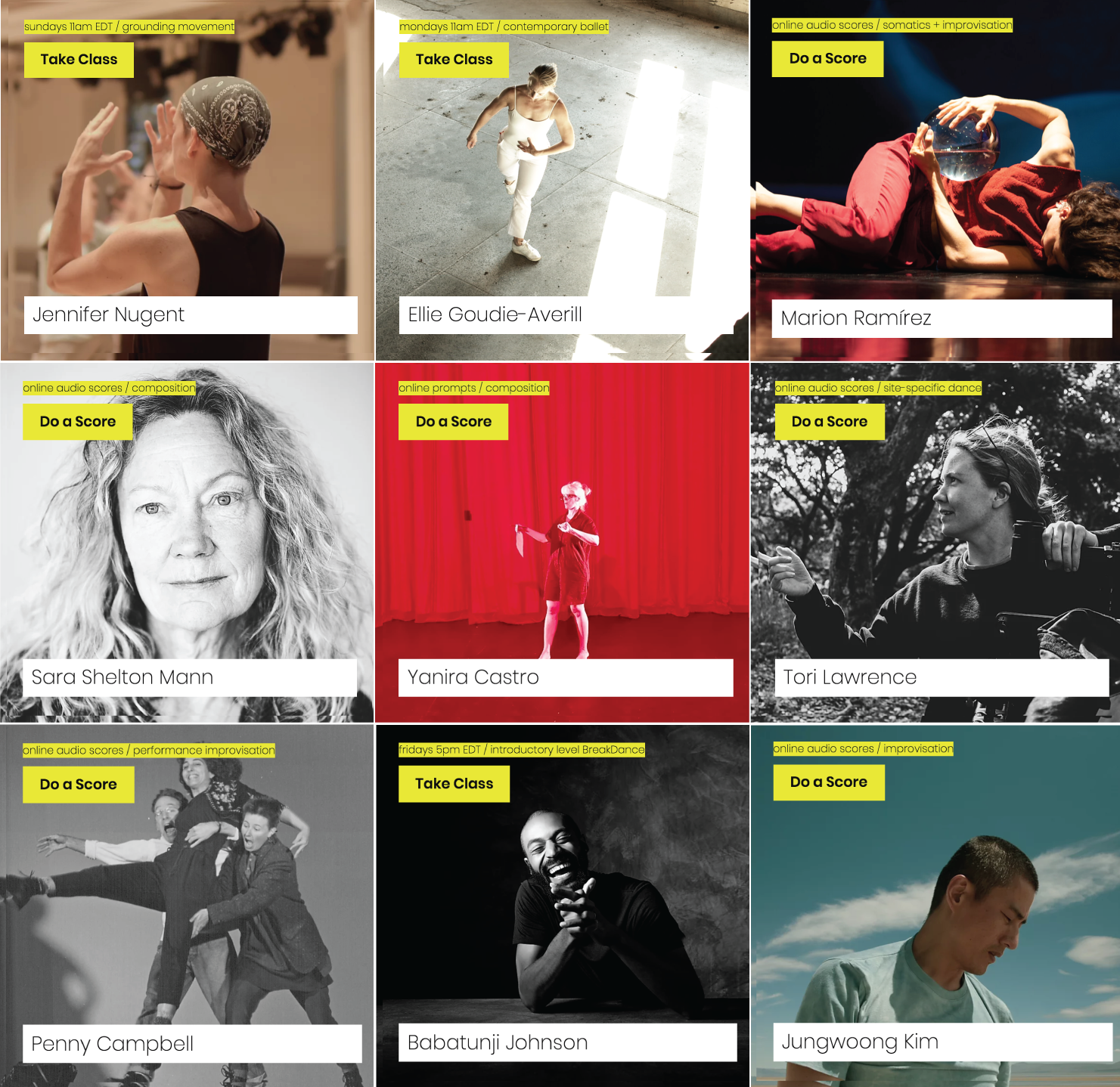
Photo: Tori Lawrence
Two Philly-based artists, Marion Ramirez and Jungwoong Kim (contact improvisers who each have a choreographic practice), also created beautiful scores for the site. Ramirez’s score is Mapping Home, and Jungwoong’s is Wave-length. Marion answered a few questions about her score-writing process via email. “I gave myself the task to make a score which gives participants a sensory experience from both the inner experience and the input they receive from the outside world, with the hope to journey through a practice where one can find more grounding during these disorienting days,” she wrote. “Knowing that this score was going to be practiced by dancers, I felt I should use different elements related to the actual space in which people are practicing, so they can be present with what they have rather than trying to recreate a ‘neutral’ dance studio space. I wanted to help them make a connection between their art and the place they inhabit. Home is both the body and the house home. For this reason I wanted to use food, paper for drawings, and furniture in their movement improvisations.”
When asked about the importance of personal practice, Marion said, “Maintaining a personal practice feels not just important, but life saving. For physical and mental health, having rituals helps us journey on. For me, it is breathing practices throughout the day, running while listening for the sounds of the neighborhood, feeling the warmth of the air through the mask, aligning my bones while I take afternoon walks, and doing house dance parties before dinner.”
Movement Crossings and freeskewl have now joined forces, so dancers can go to one site and choose whether to join a live class, or interact with scores on their own. There are many scores to delve into on the sites, and a diverse lineup of freeskewl classes every week. So breathe, be present, and make your choice. There is so much dancing to be done. This dancing might keep you occupied for a very long time, staying curious and making new discoveries. What we learn during this time will carry us forward and make us ready to meet up in the studio again—more grounded within ourselves and therefore more open to each other.
By Eleanor Goudie-Averill
May 18, 2020

